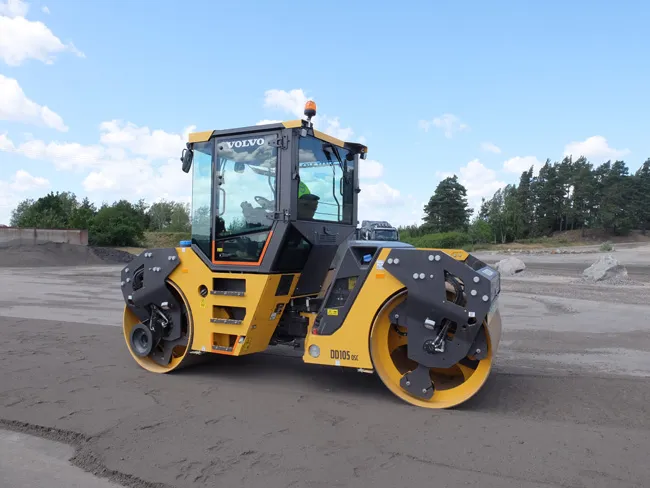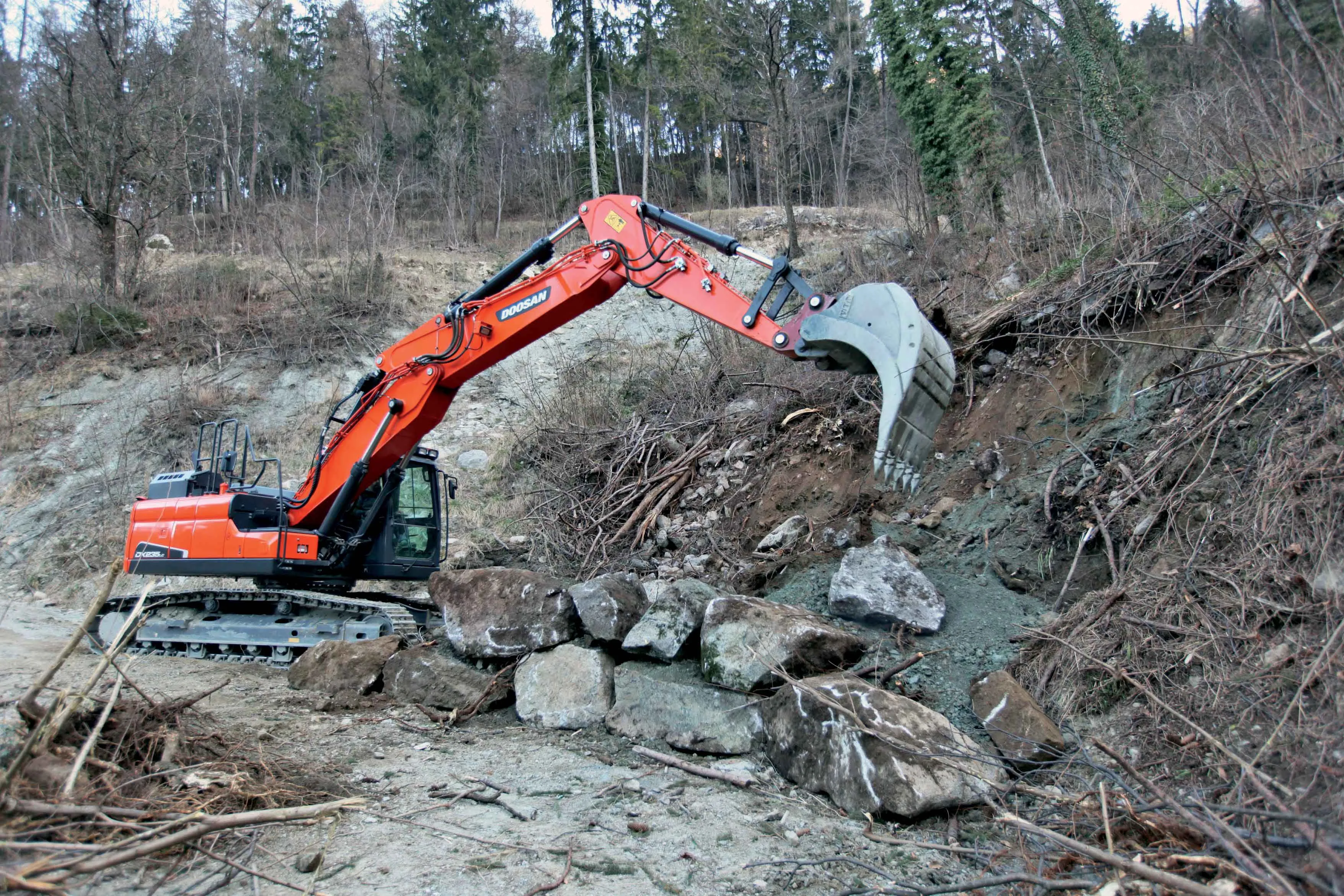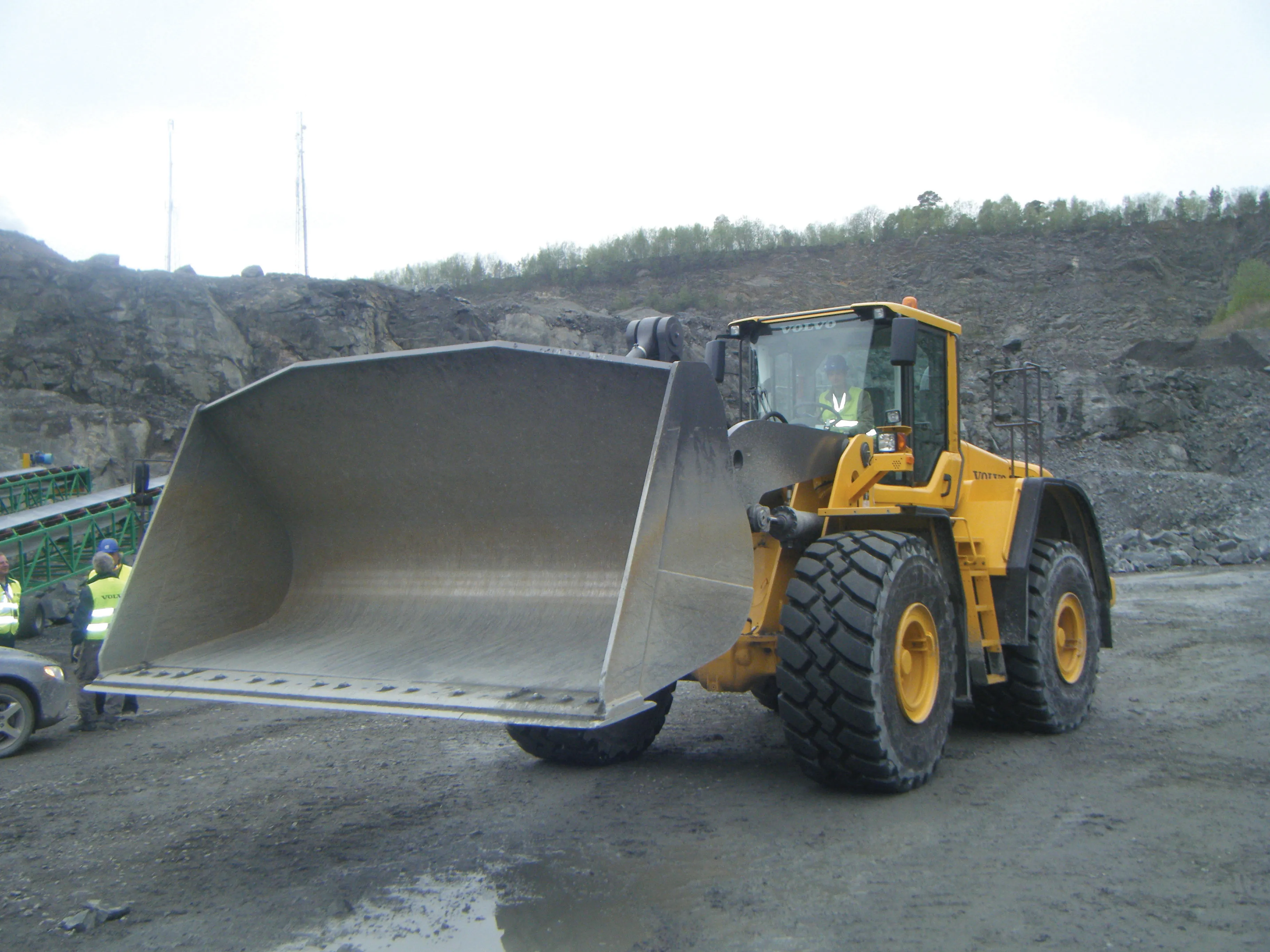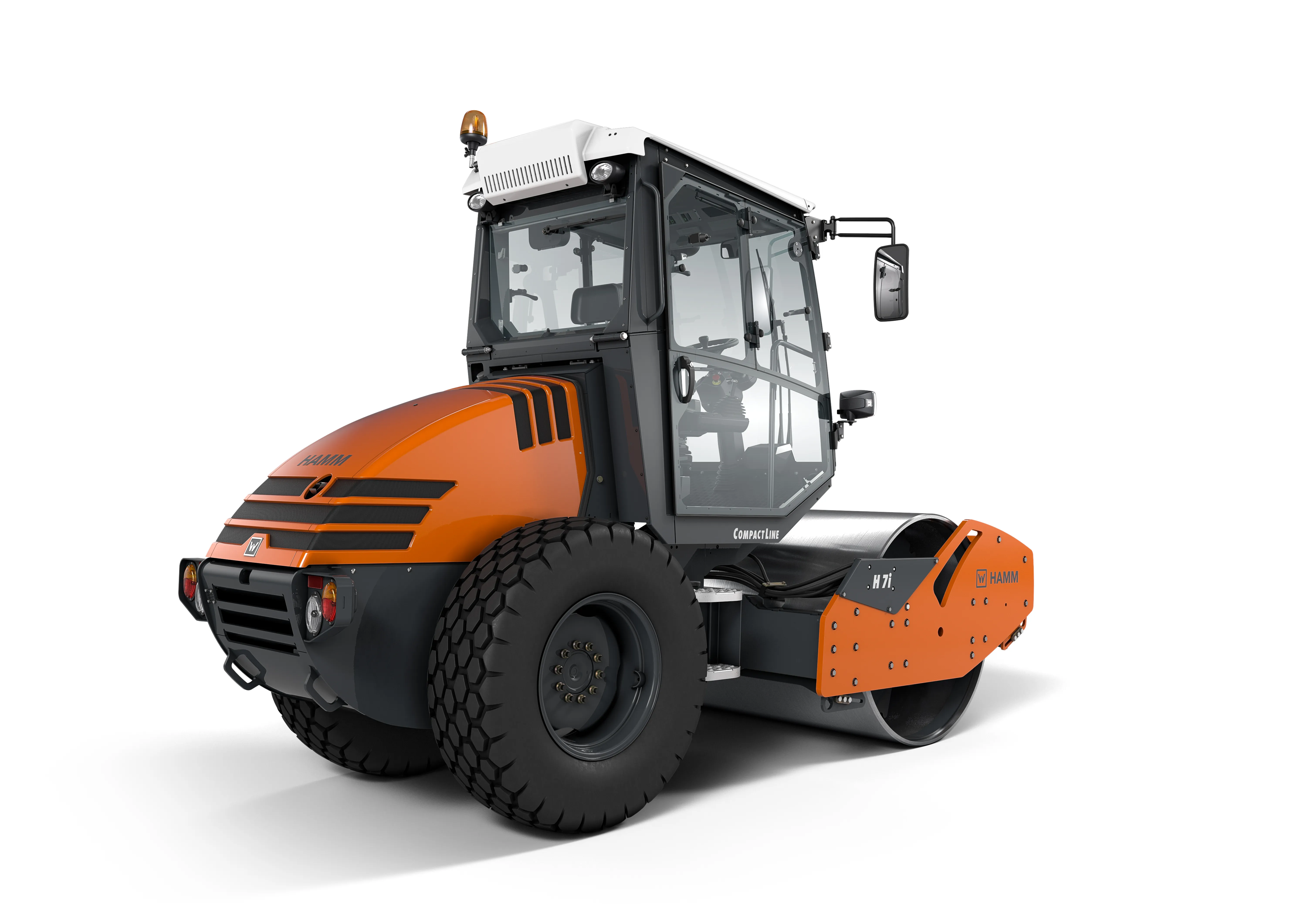
Offering oscillation type compaction is a major development for Volvo CE, a package that broadens the firm’s road machinery range. The advantage of the oscillation type compaction is that the forces generated by the drum do not travel as far as those generated by a conventional vibration type drum and do not reflect back upwards from base layers. This is a key issue as it means compaction machines using oscillation can be used in urban areas, without causing a disturbance or risking damage to buildings or underground utilities. Because the forces do not travel, oscillation type compaction also has no effect on sensitive computing equipment or electronics located near the working area. In addition, the oscillation system allows compaction of asphalt laid on bridge decks, ensuring a longer lasting running surface. And the oscillation type compaction also suits use with flexible pavements and thin lifts.
The new DD 105 OSC variant shares the same outer dimensions as the standard model and is fitted with conventional vibration on the front drum and oscillation on the rear.
Weighing in at 9.926tonnes, the machine is a little lighter than the standard machine DD 105, which tips the scales at 10.5tonnes. Like the conventional model, this new variant has drum widths of 1.68m and drum diameters of 1.22m.Drum frequency is 39Hz, with high centrifugal forces claimed and a choice of eight amplitude settings. The compactor uses the same engine as the standard model, with a power rating of 85kW from the Volvo D3.8 engine fitted and which meets Tier 4 Final emissions requirements.
The new machine also has the firm’s latest Compact Assist package, intended to optimise compaction quality and performance. This system is said to allow intelligent compaction, mapping the number of passes, mat temperatures and density values.
The firm says that its drum vibration system reduces start-up power consumption by 50%, while the eco mode lowers fuel consumption by up to 30% without impacting performance and the engine output adapts to the working requirements, furthering lowering fuel use.
The design of the cab has a pillar-less forward view that maximises visibility to the drum edges, as well as the water spraying system and working area. Meanwhile the off-set steering is said to improve the operator’s view of any kerbs and obstructions., further aided by the sliding and rotating seat that allows a better field of view over the mat and drum edges.
Other features include an automatic drum water system with triple filtration, providing uniform coverage with variable flow to prevent material pick-up. The automatic drum wetting system also features primary and backup pumps, primary and backup spray bars for each drum, hand serviceable nozzles and drum wipers.
The machine is now available for customers in North America and in the emissions regulated areas of the firm’s EMEA sales region.








